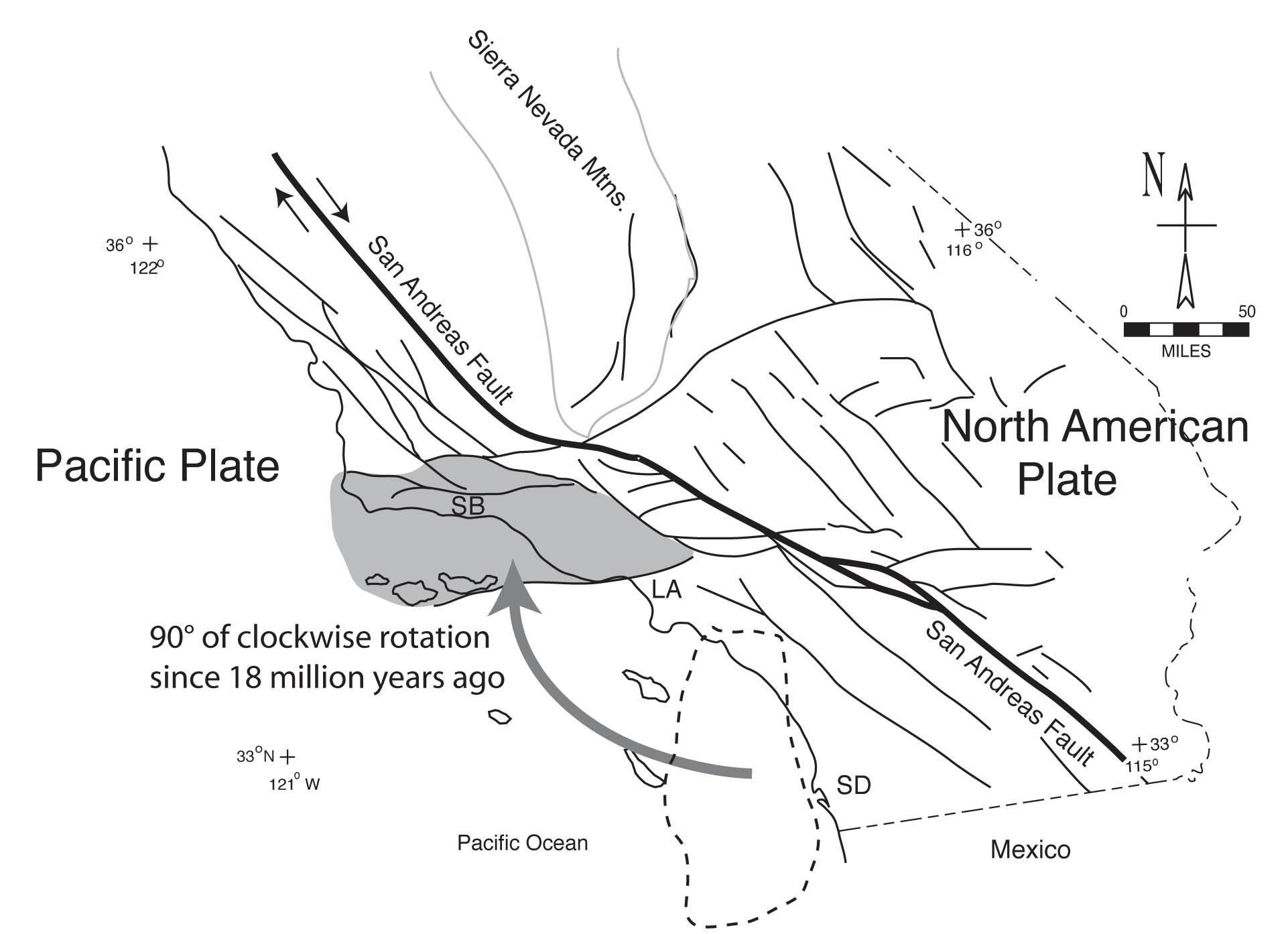The American Chemical Society’s Petroleum Research Fund selected an assistant professor from Cal State Long Beach for a $50,000 grant to research the relationship between California’s ever-moving tectonic plates and its oil-bearing basins.
Nate Onderdonk, from CSULB’s Department of Geological Studies, received the grant to study the effect of rotating tectonic plates on the topography, fault lines and oil production in the Santa Barbara area.
According to the American Chemical Society’s website, the Petroleum Research Fund supports “fundamental research in the petroleum and energy fields.”
Chunks of the Earth’s crust have rotated around a vertical axis — a phenomenon that only occurs in a few places on the earth. Southern California is one of the most noted and, according to Onderdonk, most of Southern California’s oil is found in large holes produced by the slippage.
Onderdonk explained that the right combination of heat, pressure and sediments in these holes produces oil. The study’s findings could help to predict more accurately where oil might be in other places.
Onderdonk and his student researchers will concentrate on how the rotation has affected the development of mountain ranges and seismic risks of active faults as well as how the rotational component plays into the formation of oil.
“People have been looking at oil-bearing basins for a long time and it’s nothing new that these things are stretched apart and organic rock gets deposited, then it gets squeezed back together, and that’s where the oil gets trapped and formed. But this rotational component has been largely overlooked,” he said in a press release.
“Things aren’t just stretching apart perfectly orthogonally [at right angles] and coming back the same way, they’re actually being squeezed back in a rotational area. That makes it a completely different geometry to the faults and the folds that occur there. I’m evaluating how that unique geometry affects where oil is found.”
The geologist considers himself an environmentalist and believes the best way for the United States to achieve oil independence is through conservation of resources.
In response to the newly popular phrase, “drill, baby, drill,” Onderdonk referred to deep offshore drilling as “very difficult” and “not always economically feasible for oil companies.”
“It would be 30 to 40 years before [the oil] is available on the market,” he said. “It’s not nearly as easy as those people make it seem.”
Onderdonk said he looks at this project from a scientific and geological standpoint. He said he has always been interested in the land around him and the evolution of the Earth’s surface.
He has concentrated on this subject since he was in graduate school. Onderdonk said his research focused on how “big pieces of Southern California have spun like a merry-go-round while the two big plates are slipping by.”
The “merry-go-round” is a semicircular movement of a large chunk of crust from San Diego to Santa Barbara. This 90-degree clockwise rotation happened over 18 million years, on a “geologic timescale,” and is what made the Los Angeles basin.
Onderdonk expressed excitement to be able to measure how fast these movements are occurring today.
“Geology is often wrongly considered a science that deals only with things that happened in the past,” he said, “but if you look at it tectonically, it is an active science. It really affects how and where people live.”





Before I even started going to college, I worked for the GDEP Program during the Summer of 2002, and the Department of Geological Studies played a huge part in its success. Congratulations to Dr. Onderdonk.